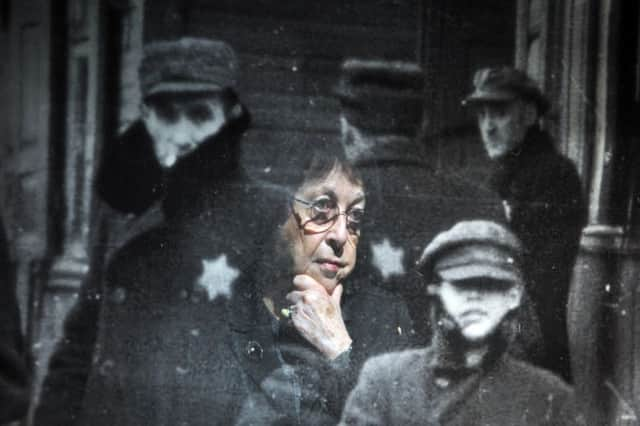From hell to Halifax: How my parents escaped the Holocaust


She remembers the constant fear that she, family or friends would be killed, the terrible hunger and the shock of people’s attitudes changing almost overnight, of being forced to walk in the gutter. “I have no answer until now, how it can happen, that people can be so full of hatred,” she said.
Mrs Veisaite, a theatre scholar, now 88, survived, when she was smuggled out of the ghetto and taken in by a “wonderful” Lithuanian Catholic woman, who already had six children.
Advertisement
Hide AdAdvertisement
Hide AdMrs Veisaite’s cousin Margaret and fiancee Joseph Kagan, and later textile magnate Lord Kagan, escaped by hiding in a 6ft square box he had built in the roof of the factory and which they shared with his mother. They were among only 500 of the 30,000 Jews of Kaunas to survive the War.
Yesterday Mrs Veisaite was in Halifax, having travelled from Lithuania to see her niece Jenny Kagan’s exhibition at Dean Clough, which tells the story of her parents’ escape.
Mrs Veisaite said her niece, a theatrical lighting designer who has worked on shows like Miss Saigon and Les Miserables, had created an “absolutely outstanding and original” personal memorial and piece of art.
She said: “It brings back a lot of memories. It is painful to go back. Jenny made an absolutely wonderful, talented job as an artist and as a human being.
Advertisement
Hide AdAdvertisement
Hide Ad“I think it has to be shown not only in Halifax, but it has to be shown all over the world and it should come to Lithuania.”
Mrs Veisaite, who became a college lecturer and head of the Thomas Mann Cultural Centre in Nida, Lithuania, after the war, still has nightmares about her experiences. “We saw hundreds and hundreds of Russian war prisoners and they were dying from hunger, it was terrible. Even though we were very hungry, we tried to throw some food to them through the fence.
“If a German guard would notice it they would kill us - we were not allowed to help them. We ourselves needed help. I could not take this, it was very hard.
“I became dystrophic, I was lying in bed for six weeks, but I survived. I came to very good, nice people who took care of me, but then I had to move around because it was dangerous to stay in one place.
Advertisement
Hide AdAdvertisement
Hide Ad“The rule was that if the authorities found a Jew hidden by a Lithuanian, they would kill all the family. It was very dangerous.”
Out of Darkness tells the story of the Kagans’ survival in an original way. Visitors are led through an atmospheric space to find a maze of barbed wire, seemingly solid windows, which reveal images when lit, and suitcases which contain magical interiors when opened.
Ms Kagan said the story of her parents’ survival was one of triumph and she’d built in humour and warmth because it was present in the story and because it “enables people to connect to the material in a different way.” She said the exhibition was not made for her aunt, or for people whose history it was, “but those it isn’t”.
The project was five years in the making. She said: “I think my background on large scale musicals has given me quite high production values and just a lack of fear of scale. The scale is pretty huge, it’s very ambitious. It is stupidly ambitious. I wanted to make it very much art rather than a museum piece.”
*Out of Darkness runs until July 10.